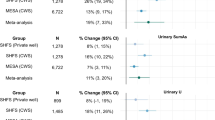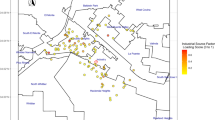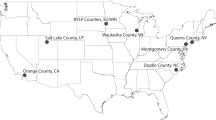Abstract
Members of the Navajo Nation, who possess a high prevalence of cardiometabolic disease, reside near hundreds of local abandoned uranium mines (AUM), which contribute uranium, arsenic and other metals to the soil, water and air. We recently reported that hypertension is associated with mine waste exposures in this population. Inflammation is a major player in the development of numerous vascular ailments. Our previous work establishing that specific transcriptional responses of cultured endothelial cells treated with human serum can reveal relative circulating inflammatory potential in a manner responsive to pollutant exposures, providing a model to assess responses associated with exposure to these waste materials in this population. To investigate a potential link between exposures to AUM and serum inflammatory potential in affected communities, primary human coronary artery endothelial cells were treated for 4 h with serum provided by Navajo study participants (n=145). Endothelial transcriptional responses of intercellular adhesion molecule-1 (ICAM-1), vascular cell adhesion molecule-1 (VCAM-1) and chemokine ligand 2 (CCL2) were measured. These transcriptional responses were then linked to AUM exposure metrics, including surface area-weighted AUM proximity and estimated oral intake of metals. AUM proximity strongly predicted endothelial transcriptional responses to serum including CCL2, VCAM-1 and ICAM-1 (P<0.0001 for each), whereas annual water intakes of arsenic and uranium did not, even after controlling for all major effect modifiers. Inflammatory potential associated with proximity to AUMs, but not oral intake of specific metals, additionally suggests a role for inhalation exposure as a contributor to cardiovascular disease.
This is a preview of subscription content, access via your institution
Access options
Subscribe to this journal
Receive 6 print issues and online access
$259.00 per year
only $43.17 per issue
Buy this article
- Purchase on Springer Link
- Instant access to full article PDF
Prices may be subject to local taxes which are calculated during checkout



Similar content being viewed by others
References
McLemore V . The Grants uranium district: update on source, deposition, exploration. Mt Geol 2011; 48: 23–44.
deLemos JL, Brugge D, Cajero M, Downs M, Durant JL, George CM et al. Development of risk maps to minimize uranium exposures in the Navajo Churchrock mining district. Environ Health Glob Access Sci Source 2009; 8: 29.
Hoover J, Gonzales M, Shuey C, Barney Y, Lewis J . Elevated arsenic and uranium concentrations in unregulated water sources on the Navajo nation, USA. Expo Health 2016 (e-pub ahead of print; doi:10.1007/s12403-016-0226-6).
Blake JM, Avasarala S, Artyushkova K, Ali A-MS, Brearley AJ, Shuey C et al. Elevated concentrations of U and co-occurring metals in abandoned mine wastes in a Northeastern Arizona native American community. Environ Sci Technol 2015; 49: 8506–8514.
Nava LT, Zambrano JM, Arviso KP, Brochetti D, Becker KL . Nutrition-based interventions to address metabolic syndrome in the Navajo: a systematic review. J Clin Nurs 2015; 24: 3024–3045.
Hund L, Bedrick EJ, Miller C, Huerta G, Nez T, Ramone S et al. A Bayesian framework for estimating disease risk due to exposure to uranium mine and mill waste on the Navajo Nation. J R Stat Soc Ser A Stat Soc 2015; 178: 1069–1091.
Chen Y, Santella RM, Kibriya MG, Wang Q, Kappil M, Verret WJ et al. Association between arsenic exposure from drinking water and plasma levels of soluble cell adhesion molecules. Environ Health Perspect 2007; 115: 1415–1420.
Karim MR, Rahman M, Islam K, Mamun AA, Hossain S, Hossain E et al. Increases in oxidized low-density lipoprotein and other inflammatory and adhesion molecules with a concomitant decrease in high-density lipoprotein in the individuals exposed to arsenic in Bangladesh. Toxicol Sci Off J Soc Toxicol 2013; 135: 17–25.
Smoliga JM, Colombo ES, Campen MJ . A healthier approach to clinical trials evaluating resveratrol for primary prevention of age-related diseases in healthy populations. Aging 2013; 5: 495.
Aird WC . Endothelium in health and disease. Pharmacol Rep PR 2008; 60: 139–143.
Aukrust P, Halvorsen B, Yndestad A, Ueland T, Øie E, Otterdal K et al. Chemokines and cardiovascular risk. Arterioscler Thromb Vasc Biol 2008; 28: 1909–1919.
Cung H, Aragon MJ, Zychowski K, Anderson JR, Nawarskas J, Roldan C et al. Characterization of a novel endothelial biosensor assay reveals increased cumulative serum inflammatory potential in stabilized coronary artery disease patients. J Transl Med 2015; 13: 99.
Channell MM, Paffett ML, Devlin RB, Madden MC, Campen MJ . Circulating factors induce coronary endothelial cell activation following exposure to inhaled diesel exhaust and nitrogen dioxide in humans: evidence from a novel translational in vitro model. Toxicol Sci Off J Soc Toxicol 2012; 127: 179–186.
Schisler JC, Ronnebaum SM, Madden M, Channell M, Campen M, Willis MS . Endothelial inflammatory transcriptional responses to an altered plasma exposome following inhalation of diesel emissions. Inhal Toxicol 2015; 27: 272–280.
Agarwal B, Campen MJ, Channell MM, Wherry SJ, Varamini B, Davis JG et al. Resveratrol for primary prevention of atherosclerosis: clinical trial evidence for improved gene expression in vascular endothelium. Int J Cardiol 2013; 166: 246–248.
Aragon MJ, Chrobak I, Brower J, Roldan L, Fredenburgh LE, McDonald JD et al. Inflammatory and vasoactive effects of serum following inhalation of varied complex mixtures. Cardiovasc Toxicol 2016; 16: 163–171.
Paffett ML, Zychowski KE, Sheppard L, Robertson S, Weaver JM, Lucas SN et al. Ozone inhalation impairs coronary artery dilation via intracellular oxidative stress: evidence for serum-borne factors as drivers of systemic toxicity. Toxicol Sci Off J Soc Toxicol 2015; 146: 244–253.
Robertson S, Colombo ES, Lucas SN, Hall PR, Febbraio M, Paffett ML et al. CD36 mediates endothelial dysfunction downstream of circulating factors induced by O3 exposure. Toxicol Sci Off J Soc Toxicol 2013; 134: 304–311.
Livak KJ, Schmittgen TD . Analysis of relative gene expression data using real-time quantitative PCR and the 2(-Delta Delta C(T)) method. Methods 2001; 25: 402–408.
NCEP . Third Report of the National Cholesterol Education Program (NCEP) Expert Panel on Detection, Evaluation, and Treatment of High Blood Cholesterol in Adults (Adult Treatment Panel III) Final Report. Circulation 2002; 106: 3143–3143.
Chobanian AV, Bakris GL, Black HR, Cushman WC, Green LA, Izzo JL et al. Seventh report of the joint national committee on prevention, detection, evaluation, and treatment of high blood pressure. Hypertension 2003; 42: 1206–1252.
American Diabetes Association. Standards of medical care in diabetes—2012. Diabetes Care 2012; 35: S11–S63.
Bell ML, Ebisu K, Peng RD, Samet JM, Dominici F . Hospital admissions and chemical composition of fine particle air pollution. Am J Respir Crit Care Med 2009; 179: 1115–1120.
Lippmann M, Ito K, Hwang J-S, Maciejczyk P, Chen L-C . Cardiovascular effects of nickel in ambient air. Environ Health Perspect 2006; 114: 1662–1669.
Niu J, Liberda EN, Qu S, Guo X, Li X, Zhang J et al. The role of metal components in the cardiovascular effects of PM2.5. PLoS ONE 2013; 8: e83782.
Munson SM, Belnap J, Okin GS . Responses of wind erosion to climate-induced vegetation changes on the Colorado Plateau. Proc Natl Acad Sci USA 2011; 108: 3854–3859.
Stovern M, Felix O, Csavina J, Rine KP, Russell MR, Jones RM et al. Simulation of windblown dust transport from a mine tailings impoundment using a computational fluid dynamics model. Aeolian Res 2014; 14: 75–83.
Estruch R, Martínez-González MA, Corella D, Salas-Salvadó J, Ruiz-Gutiérrez V, Covas MI et al. Effects of a Mediterranean-style diet on cardiovascular risk factors: a randomized trial. Ann Intern Med 2006; 145: 1–11.
Lessiani G, Santilli F, Boccatonda A, Iodice P, Liani R, Tripaldi R et al. Arterial stiffness and sedentary lifestyle: role of oxidative stress. Vascul Pharmacol 2016; 79: 1–5.
Xu T, Holzapfel C, Dong X, Bader E, Yu Z, Prehn C et al. Effects of smoking and smoking cessation on human serum metabolite profile: results from the KORA cohort study. BMC Med 2013; 11: 60.
Bennet AM, Prince JA, Fei GZ, Lyrenäs L, Huang Y, Wiman B et al. Interleukin-6 serum levels and genotypes influence the risk for myocardial infarction. Atherosclerosis 2003; 171: 359–367.
Rutter MK, Meigs JB, Sullivan LM, D’Agostino RB, Wilson PWF . C-reactive protein, the metabolic syndrome, and prediction of cardiovascular events in the Framingham Offspring Study. Circulation 2004; 110: 380–385.
Wang TJ, Nam B-H, Wilson PWF, Wolf PA, Levy D, Polak JF et al. Association of C-reactive protein with carotid atherosclerosis in men and women: the Framingham Heart Study. Arterioscler Thromb Vasc Biol 2002; 22: 1662–1667.
Harmon ME, Campen MJ, Miller C, Shuey C, Cajero M, Lucas S et al. Associations of circulating oxidized LDL and conventional biomarkers of cardiovascular disease in a cross-sectional study of the Navajo population. PLoS ONE 2016; 11: e0143102.
Williams GM, Iatropoulos MJ . Alteration of liver cell function and proliferation: differentiation between adaptation and toxicity. Toxicol Pathol 2002; 30: 41–53.
Yurdagul A, Finney AC, Woolard MD, Orr AW . The arterial microenvironment: the where and why of atherosclerosis. Biochem J 2016; 473: 1281–1295.
Acknowledgements
This research was supported by the National Institute of Environmental Health Sciences (NIEHS P30 ES-012072, R25 ES013208, R01 ES014639 & R01 ES014565), the National Heart, Lung and Blood Institute (NHLBI T32 HL007736), the National Institute for General Medical Sciences (GM088021), the University of New Mexico General Clinical Research Center (NIH NCRR GCRC Grant # M01-RR00997), the UNM HSC Clinical & Translational Science Center (NIH NCATS Grant # 8UL1TR000041), and in-kind water analyses from USEPA Region IX Laboratories. We would like to thank Deborah MacKenzie for her technical assistance. The authors wish to sincerely thank all of the Navajo chapter members who participated in this study.
Author information
Authors and Affiliations
Corresponding author
Ethics declarations
Competing interests
The authors declare no conflict of interest.
Additional information
Supplementary Information accompanies the paper on the Journal of Exposure Science and Environmental Epidemiology website
Supplementary information
Rights and permissions
About this article
Cite this article
Harmon, M., Lewis, J., Miller, C. et al. Residential proximity to abandoned uranium mines and serum inflammatory potential in chronically exposed Navajo communities. J Expo Sci Environ Epidemiol 27, 365–371 (2017). https://doi.org/10.1038/jes.2016.79
Received:
Accepted:
Published:
Issue Date:
DOI: https://doi.org/10.1038/jes.2016.79
Keywords
This article is cited by
-
US drinking water quality: exposure risk profiles for seven legacy and emerging contaminants
Journal of Exposure Science & Environmental Epidemiology (2024)
-
Combined exposure to multiple metals on abdominal aortic calcification: results from the NHANES study
Environmental Science and Pollution Research (2024)
-
Meteorological data source comparison—a case study in geospatial modeling of potential environmental exposure to abandoned uranium mine sites in the Navajo Nation
Environmental Monitoring and Assessment (2023)
-
BMI-specific inflammatory response to phthalate exposure in early pregnancy: findings from the TMCHESC study
Environmental Science and Pollution Research (2023)
-
Uranium: an overview of physicochemical properties, exposure assessment methodologies, and health effects of environmental and occupational exposure
Environmental Geochemistry and Health (2023)



